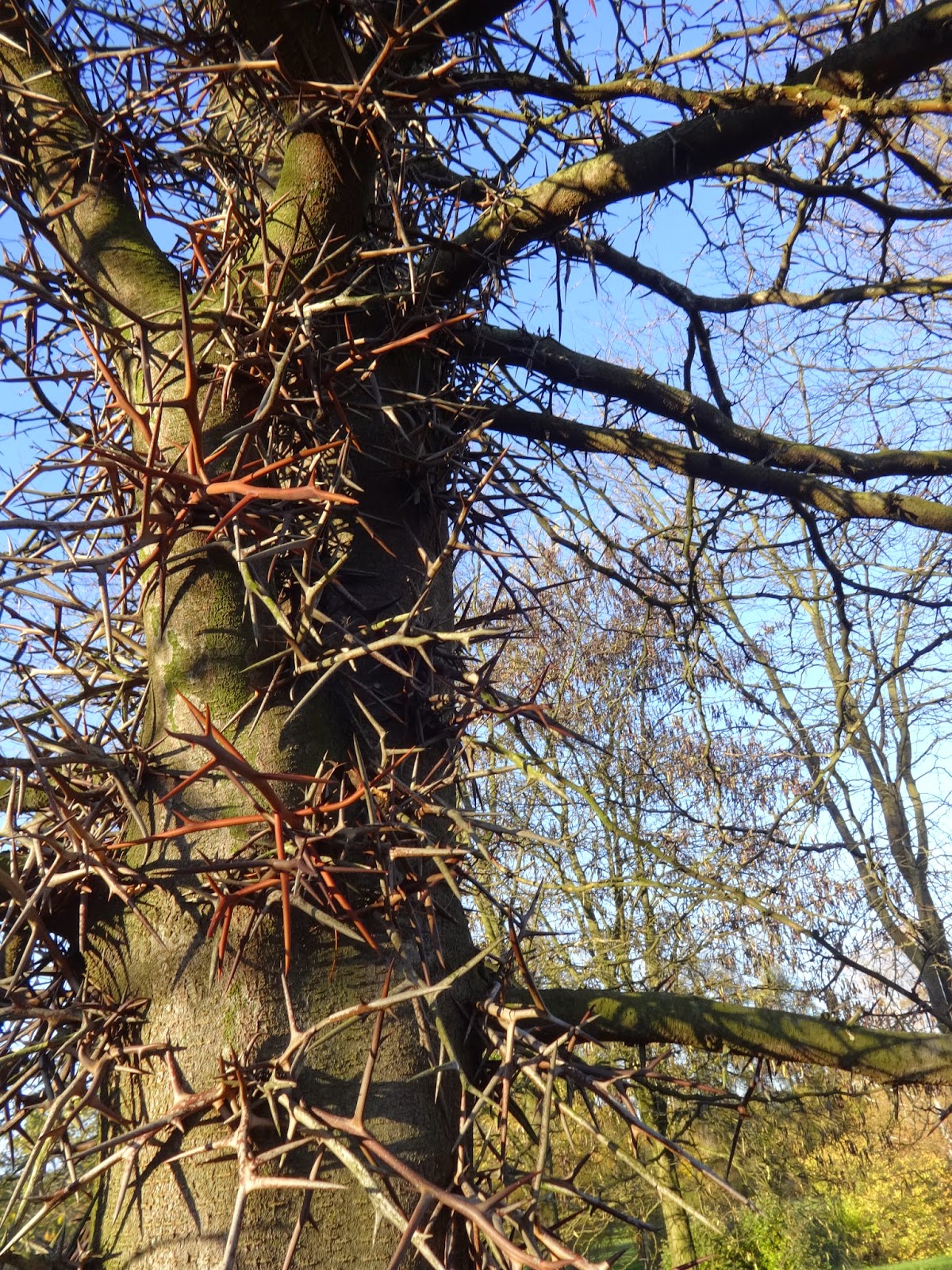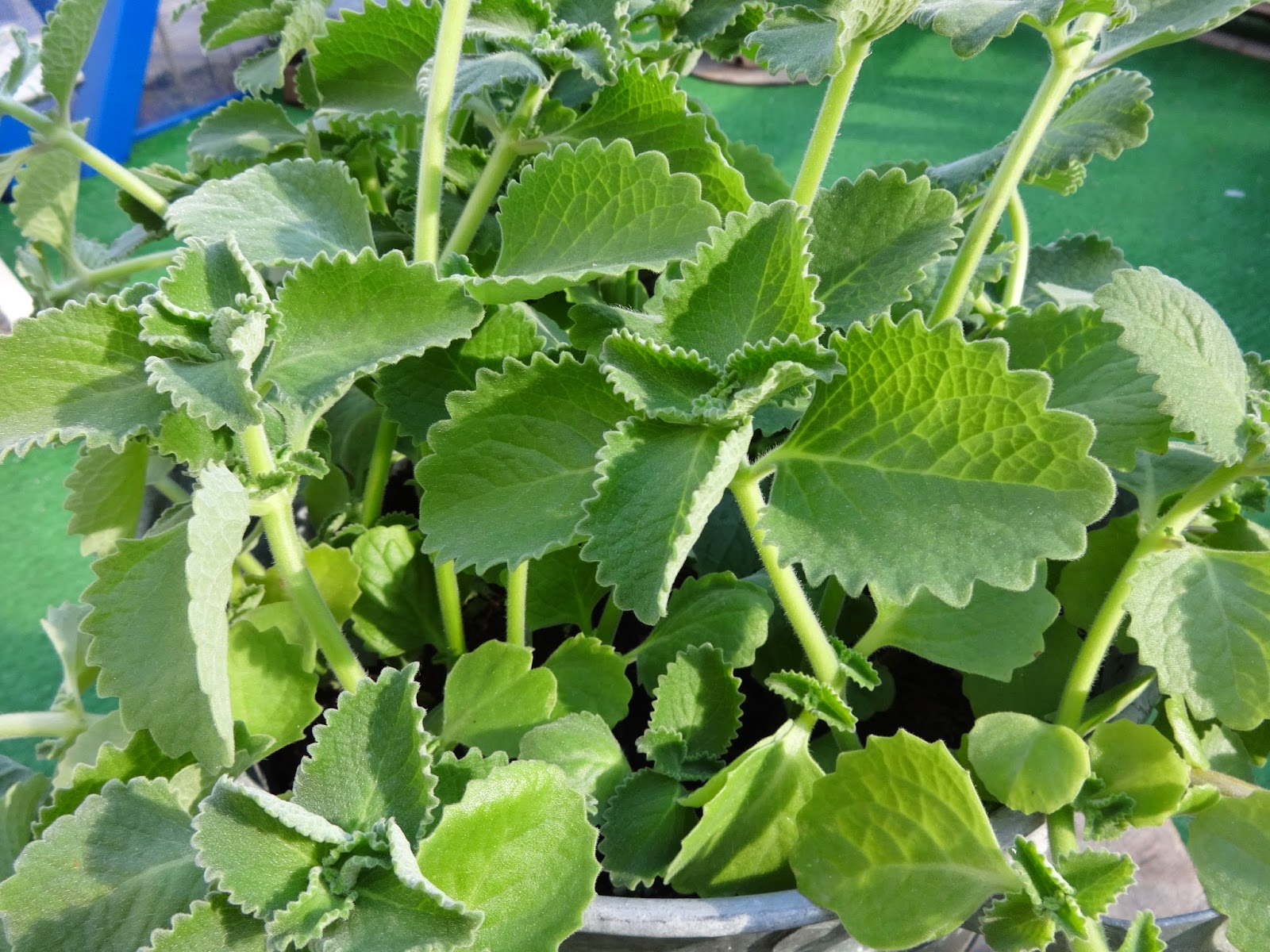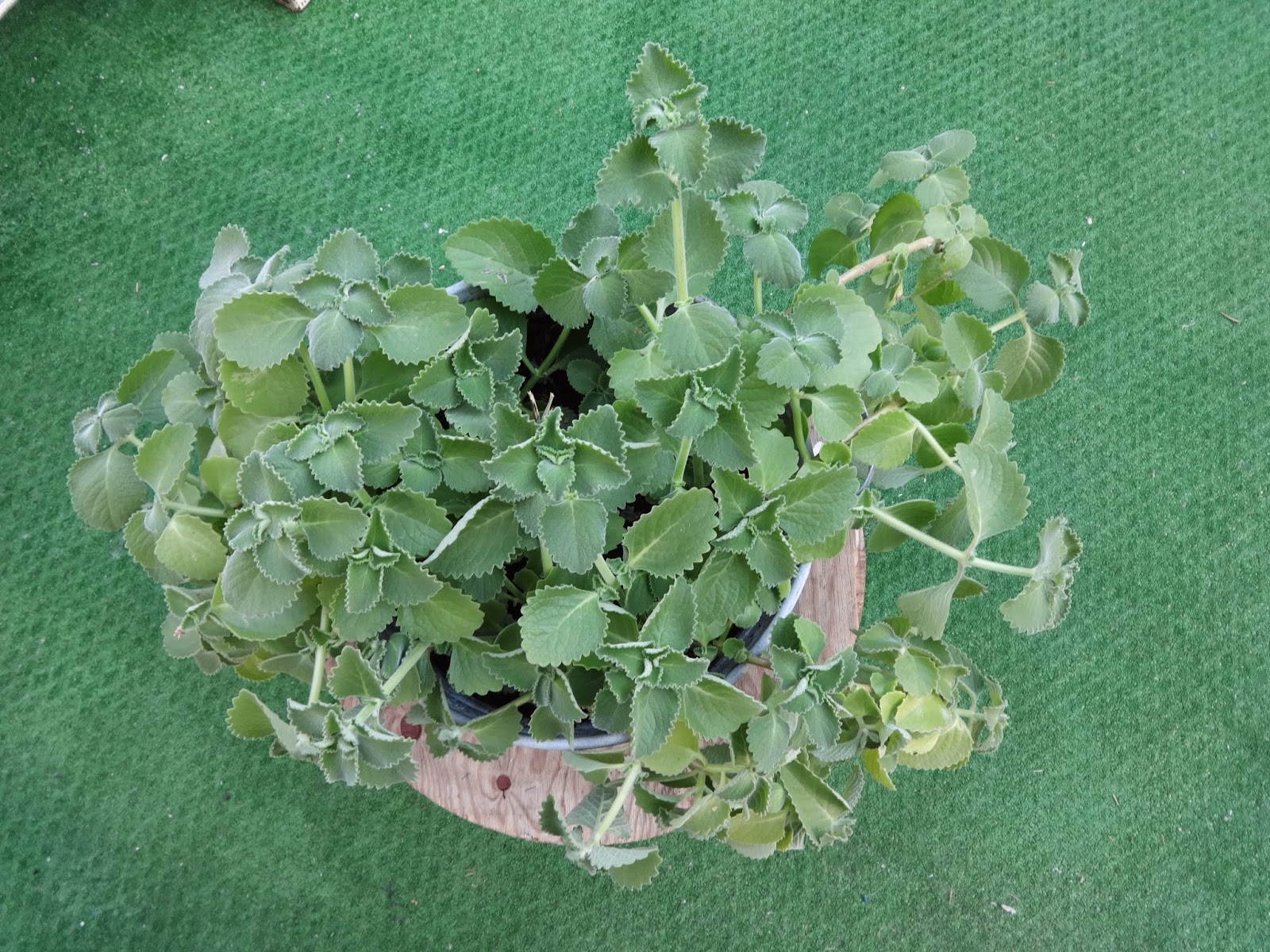 Polska wersja
Polska wersjaPLANT PROFILE
Gleditsia is a legume tree, very characteristic for its turfs of thorns growing straight from the trunk and branches of the tree, but there are thornless cultivars (Gleditsia triacanthos var. inermis) as well. This tree genus can be found as a part of wild flora in many regions of south and east of Asia, both Americas and Africa.
The two most popular species of Gleditsia worldwide are North American Gleditsia triacanthos L. and Asiatic Gleditsia sinensis Lam. The both species are so closely related and similar that it is hard to distinguish it, except for the seedpods that are thicker in G. sinensis. Both species also cross-pollinate easily creating hybrids, not only between each other but also with other closely related species like : Gleditsia japonica Miq., Gleditsia koraiensis Nakai., Gleditsia macarantha Desf., Gleditsia horrida Willd. and Gleditsia officinalis Hemsl..
All those Gleditsias have edible seeds and very sweet seedpod pulp, that brought it's common name Honey Locust, and their pods and thorns are used as a traditional medicine. Gleditsia triacanthos is reported to be used traditionally by indigenous Indians but seems to have less significance in American herbal medicine than Gleditsia sinensis have in China (it's thorns are one of 50 fundamental herbs in Tradicional Chinese Medicine). Also Japan, Korea and Vietnam seems to have very long traditions of using Gleditsia as a medicinal herb.
Gleditsia is sometimes planted in Europe as well as in its homelands, as an ornamental tree, but in some areas of USA and Australia it is considered an invasive weed. Leaves of Gleditsia are turning beautifully golden-yellow before they fall in autumn, but there is cultivar that have yellow leaves straight from spring ( Gleditsia triacanthos 'Sunburst' ) and reddish brown ( Gleditsia triacanthos 'Ruby Lace' ).
CULTIVATION AND HARVESTING
Gleditsia is a fast growing tree up to around 30m h. In its homelands it commonly grow on moist, fertile soils near streams or lakes, but it tolerate well sandy or loamy, dry poor soils with pH 6,0-8,0. It is hardy to -30'C, cope well with salinity of soil and is widely planted for windbreaks and to stop soil erosion. If trimmed it can made a thick impenetrable hedge. Honey Locust tolerate transplantation, droughts, heat and scorching sun, but don't like shade. In late spring male and female flowers appear on separate plants, but some of them might have both sex organs, and they are pollinated by insects. In fall edible seedpods are fully developed. Brown pods are good for medicine and use of beans, but if You want to enjoy its sweet pulp, it should be picked while still green and fleshy. Brown dried pods usually lasts on trees till spring time. There are few similar looking trees with poisonous seedpods, so You better make sure it is the right tree before You'll eat anything.
These pods are also often used as a fodder. Old pods can be used as a nitrogen-rich fertilizer. Spikes can be collected all year round, but best time for its harvesting is just like for bark, between late fall and early spring. Only still growing, young, reddish-brown or still green thorns should be gathered. Old, dead, gray in color spines are useless.
Caution is highly advised around thorny Gleditsias, as any twig might cause serious hurt by its thorns. Watch Your steps, stamping on dead branch laying on ground, might cause wounds, made by thorns able to puncture shoe soles.
COSMETIC USES
Fully ripe, dried pods, sometimes called Soap Pods, thanks to its saponins content, are boiled and obtained liquid is used as a detergent in many different cultures. In China dried pods are simply powdered and used instead of soap. It was commonly used for at least 2000 years, till 1970, when chemical detergent Tides came from abroad. Vietnamese wild Gleditsia, called Bo ket or Boket (Gleditsia australis F. B. Forbes & Hemsley, Gleditsia fera (Lour.) Merr. in latin ), is traditionally used as a shampoo. Dried pods are slightly roasted, crumbled or grinded, boiled and obtained decoction ( sometimes with grapefruit or lime peel, essential oil or other natural perfume added ) is simply used to rinse hairs. It cures dandruff, head fungi, revitalize sebaceous glands, prevent hair-loss, stimulate hair growth and is giving hairs, smooth and silky appearance . It is also main ingredient in some of commercially produced shampoos for apparently black hairs like My Hao, Dau Goi Bo Ket FRESH or SunSilk Black Silky.
CULINARY USES
 Seedpods of Honey Locust have very sweet (with slightly bittery aftertaste), tasty pulp in it when still green and it can be added to any dessert, made into a drink or fermented into alcohol. There are reports that some people are experiencing throat irritation after eating fresh seedpods pulp, that might be caused by its saponins content. Cherokee used powdered pods as a sweetener. Protein rich seeds can be cooked as beans or eaten fresh, especially when they are still green and soft. Fully ripened seeds can be roasted and used as coffee substitute or grounded into gluten-free flour. Young seedpods can be whole cooked and eaten like green beans.
Seedpods of Honey Locust have very sweet (with slightly bittery aftertaste), tasty pulp in it when still green and it can be added to any dessert, made into a drink or fermented into alcohol. There are reports that some people are experiencing throat irritation after eating fresh seedpods pulp, that might be caused by its saponins content. Cherokee used powdered pods as a sweetener. Protein rich seeds can be cooked as beans or eaten fresh, especially when they are still green and soft. Fully ripened seeds can be roasted and used as coffee substitute or grounded into gluten-free flour. Young seedpods can be whole cooked and eaten like green beans.Gleditsia's shoots has been listed as edible in Jiuhuang Bencao (Chiu Huang Pen Tsao) - 'Famine Relief Herbal'. Written in 1406 by the Ming dynasty prince Zhu Xiao/Su, as a manual for survival during times of famine.
Even though I've found no reports about usage of thorns from Gleditsia triacanthos like about those from Gleditsia sinensis. Similarities between both, inclined me to try use thorns of European offspring of probably American G. triacanthos ancestry. And I've found hot water infusion made from tablespoon of shredded thorns (young reddish-brown) to be tasty, invigorating tonic, a good black tea substitute. All part of this plant might be unhealthy if consumed in excess, and it is advised to avoid Gleditsia during pregnancy.
MEDICINAL USES
Gleditsia have been used as a medicinal herb for centuries in different regions of the world. And today there is growing number of medicinal studies from many countries confirming properties of this tree. However similar in appearance, many Gleditsias from different regions vary as chemotypes, so origin of crude drug herb substance, should be considered important. Nevertheless both traditional uses and modern medicine researches about Gleditsias from different countries, are showing strong similarities in influences on human health.
All parts of G. triacanthos contain alkaloid triacanthine, that act hypotensive and antispasmodic on bronchial smooth muscles and intestines, and also support process of burning fat, but is toxic in excess (LD50 35mg/kg, young leaves have highest concentration of triacanthine in this plant, which is up to 1%). Foster and Duke gives remedies made from Gleditsia triacanthos the same safety level as for coffee. Also G. sinensis have many specific alkaloids and triterpenoidal saponins isolated from its parts, of which any should be used with cautious.
Fully ripened, dried pods of G. triacanthos are made into tea for indigestion, stomach and duodenum ulcers (except open ones), measles, whooping cough, colds and catarrh. It is antiseptic, analgesic, mydriatic, adjuvant and anthelmintic. Cherokee use pods for dysentery, dyspepsia and measles. Creek considered the pods to be a good antidote for complains of children children. Alcoholic extracts have been proved effective against cancer. It contain saponins. alkaloids, flavonoids, glycosides and tannins.
In Traditional Chinese Medicine, G. sinensis pods ( Zao Jiao, Fructus Gleditsiae Sinensis or Gleditsia Abnormalis Fructus) in form of powder or pils, are used for constipation (induces bowels movement), coughs, congestion in chest, asthma, apoplexy, headache, epilepsy, to dispels flegm, reduce swellings, open orifices, alleviating nasal symptoms of allergic rhinitis and awaken the spirit. Paste made from boiled pods and vinegar is applied on swollen sores (before ulceration). Extracts proved to be effective anti cancer drug, with potential in leukemia treatment. It is pungent, warm in property, acts on lungs and large intestine channels. Overdose might cause vomiting and diarrhea.
Bark from twigs of Gleditsia triacanthos was used in form of infusions by Delaware Indians as a cough remedy, to cleanse blood and as a general tonic. Fox Indians used it for colds, fevers, measles and smallpox. Meskwaki used to give it to ill persons to help them regain strength and for fevers. Infusions was also used to induce sweating, reduce bronchial congestion and for treatment of dyspepsia (including the one that is caused by overheating).
I didn't found any information about use of thorns of American Gleditsia except one - Creek Indians used boiled branches with thorns for measles and smallpox, they also used it to bath as a treatment for smallpox. But Chinese highly value thorns of their trees, called Zao Jiao Ci (Spina Gleditsiae Sinensis). As one of 50 fundamental herbs in TCM, it is used for swellings, edema, suppuration, tinea, psoriasis, eczema, scabies, nodules, boils, ringworm, swollen painful breasts, preulcerous sores, carbuncle, for flegm removal and coughs. It is acrid and worm, act immunomodulatory, antialergic, antiinflammatory, antibacterial, anthelmintic, relax spasms of trachea and bronchus, expel winds and draws out toxins. Both water and ethanol extracts proved its anticancer properties it laboratory tests, among others it proved to be specifically effective against uterine and breast cancer cells. Organic acids extracted from G. sinensis thorns, showed strong anti-HIV activity.
Any parts of Gleditsia should be avoided by pregnant women and people with open sores, qi or yin deficiency and hemoptysis.Sources
'' Florida Ethnobotany '' - Daniel F. Austin, CRC Press 2004
'' Handbook of Edible Weeds '' - James A. Duke, CRC Press 2000
'' CRC World Dictionary of Medicinal and Poisonus Plants '' - Umberto Quattrocchi, CRC Press 2012
'' Medicinal Plants of Central Asia : Uzbekistan and Kyrgystan'' - Sasha W. Eisenman, Lena Struwe, David E. Zaurow, Springer Science & Business Media 2012
'' Integrating Conventional and Chinese Medicine in Cancer Care'' - Tai Lahans, Elsevier Health Sciences 2007
'' Chinese Materia Medica : Combinations and Applications '' - Xu Li, Elsevier Health Sciences 2002
'' A Materia Medica for Chinese Medicine : Plants, Minerals and Animals Products ''
- Carl-Hermann Hempen, Toni Fisher, Elsevier Health Sciences 2009
'' The CABI Encyclopedia of Forest Trees '' CABI 2013
A Summary of Famine Foods Listed in the Chlu Huang Pen Tsao (1406 A.D.)
https://www.hort.purdue.edu/newcrop/duke_energy/Gleditsia_triacanthos.html
http://www.na.fs.fed.us/pubs/silvics_manual/volume_2/gleditsia/triacanthos.htm
http://www.worldagroforestry.org/treedb/AFTPDFS/Gleditsia_triacanthos.pdf
http://firstways.com/2011/11/01/wild-candy-in-the-honey-locust-tree/
http://www.foragingtexas.com/2008/08/mesquitehoney-locust.html
http://www.inpaws.org/images/resources/Gordon%20Mitchell%20Articles/GM_honey_locust.pdf
http://blog.163.com/hesanlin_123/blog/static/49678472010101353140127
http://khartasia-crcc.mnhn.fr/ja/node/1432
http://www.vashsad.ua/plants/dendrolog/articles/show/8497/
http://hortuscamden.com/plants/view/gleditsia-sinensis-lam
http://blog.daum.net/sa55jung/15973609
http://www.loc.gov/preservation/about/prd/gardfor/essays/spongberg.html
https://www.youtube.com/watch?v=gkGf71nTGKM
http://herbaria.plants.ox.ac.uk/bol/plants400/Pages/Gleditsia
http://plantillustrations.org/taxa.php?id_taxon=1767
https://www.youtube.com/watch?v=eoSrNt426-4
http://www.saigoncosmetics.com/Tin-Tuc/Mon-qua-thien-nhien-cho-toc
http://www.eastbound88.com/showthread.php/33865-What-Vietnamese-used-before-Shampoo
http://www.meo.vn/cay-bo-ket-va-cong-dung-chua-benh.html
http://herbalis.ru/index.php?option=com_content&task=view&id=381
http://www.1000listnik.ru/lekarstvennie-travi/04/15-gledichiya.html
http://www.rootdown.us/Herbs/Zao+Jia?MeridianID=10#Profile
http://duiyaoonline.com/herbs/zaojiao.htm
http://www.epharmacognosy.com/2012/08/chinese-honeylocust-fruit-zao-jiao.html
http://www.zhongyibaike.com/wiki/%E7%9A%82%E8%8D%9A%E5%88%BA
http://www.ncbi.nlm.nih.gov/pubmed/20564491
http://www.biomedcentral.com/1472-6882/12/243
http://www.mammalive.net/research/breast-cancer-and-herbs
http://www.scientific-publications.net/get/1000002/1401701849442581.pdf
http://www.relaquim.com/archive/2009/p2009373218-229.pdf
http://www.ncbi.nlm.nih.gov/pubmed/17885844
http://gxsti01.vicp.net/english/detail/8bfc5382-ce7b-4a8f-ab02-3a8ae4bc6bbe
http://www.captura.uchile.cl/bitstream/handle/2250/16439/Cassels_Bruce.pdf?sequence=1
http://www.plant-ecology.com/Jweb_zwstxb/EN/abstract/abstract11346.shtml
http://onlinelibrary.wiley.com/doi/10.1002/ijc.25116/pdf
http://www.niscair.res.in/ScienceCommunication/AbstractingJournals/mapa/FullTextSearch/2009/October%202009/Pharmacology-Oct09.htm
http://delawaretribe.org/wp-content/uploads/LENAPE-MEDS.pdf
http://www.cjcmm.com.cn/cjcmmen/ch/reader/view_abstract.aspx?file_no=11842&flag=1
http://www.weiku.com/products/18310876/Chinese_Honeylocust_Gleditsia_sinensis_soap_bean_ornamental_tree.html
http://chineseherbinfo.com/zao-jiao-ci-gleditsia-spinethorn/
http://www.kamwo.com/help/herb-guide.php?single-herb=Zao-Jiao
http://libproject.hkbu.edu.hk/was40/detail?channelid=1288&lang=en&searchword=herb_id=D00916
http://www.carolinanature.com/trees/gltr.html
https://en.wikipedia.org/wiki/Jiuhuang_Bencao


.JPG)














































































